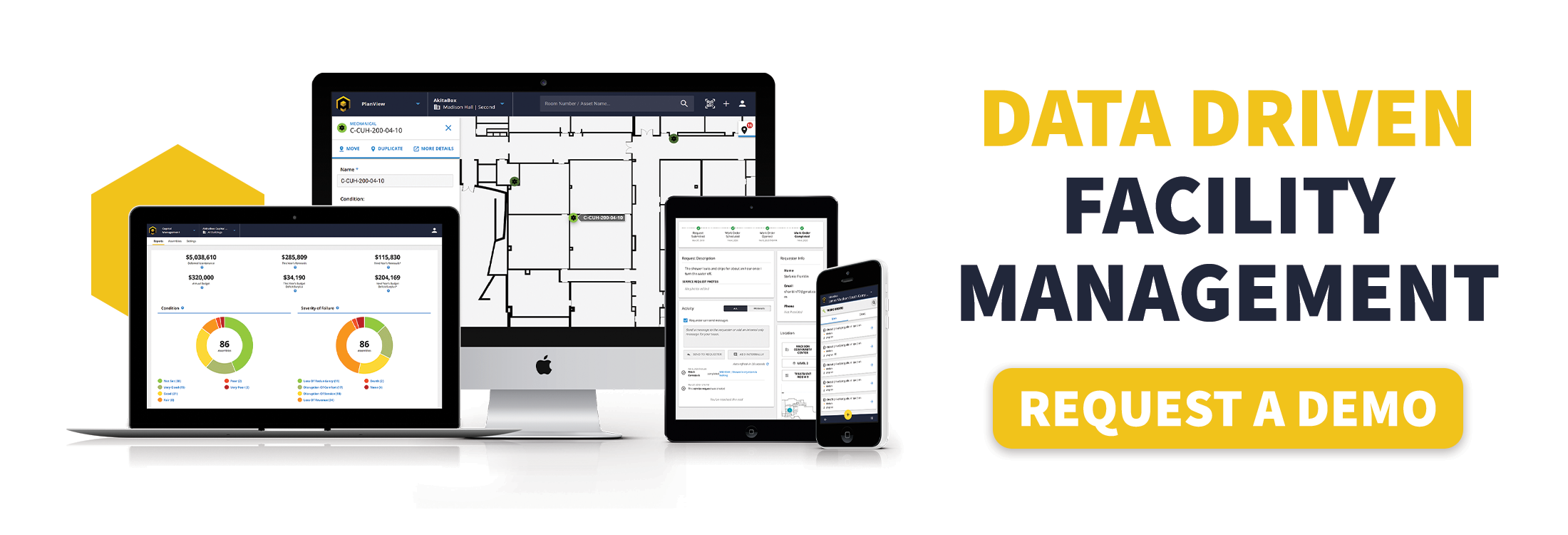Doesn’t it feel like every “trends” article says such-and-such trend will hit this year, but it never actually gets here? Many trends in technology and facilities management sneak up on you gradually. While it may take time, these trends ARE coming – maybe not this year, maybe not next year, but they’re coming. Even if they don’t impact you in 2023, you need to prepare for the year they really do hit you.
So with that, here are 5 trends facilities managers should keep in mind in 2023, 2024, and beyond.
Trend 1: ESG and Sustainability
ESG stands for environmental, social, and governance – the three sides of sustainability. Essentially, it’s a framework for measuring the sustainability of facilities. The ESG concept has been steadily gaining momentum, including recently with the SEC’s Climate Disclosure Proposal.
This proposed climate rule would require ESG reporting beyond current mandates, such as:
- Disclosure of climate-related risks, governance, financial impacts, and greenhouse gas (GHG) emissions
- Addition of ESG on financial statements with climate-related disclosure metrics
- Internal controls over financial reporting (ICFR) applied to ESG
It’s just one example of the growing global push for companies to provide more consistent, transparent ESG reporting. Facilities managers need to start preparing now for more ESG initiatives and requirements – because they’re coming like a tidal wave.
But how?
To be honest, most leaders – from the biggest multi-billion dollar corporations to the smallest local businesses – don’t really know what to do about ESG right now. And every organization’s approach to ESG is going to be different.

The one thing we can agree on (and the one thing I’m always preaching) is: get your data right. It’s ok if you don’t exactly know what’s coming with ESG. But don’t wait for it to knock on your door. Start collecting and organizing the data you already have into a baseline of where your facilities stand today.
For example:
- What is your baseline energy consumption?
- How much energy per square foot is your building consuming?
Having a dependable baseline is the first step in coming up with a plan of what ESG actions you want to take and what you want the results to be.
But you need more than just an energy consumption baseline. You need a baseline of the current condition of everything in your facility – the kind of data you’ll get by conducting a living FCA.
- What assets do you have?
- What condition are they in?
- Are there assets or situations that could impact your facility’s energy consumption?
None of us want to have to scramble to pull together ESG information once it starts being required. Take this time to get your facility data organized and really understand how your facilities are currently consuming energy.
Trend 2: Retirements and Labor Shortages
Of course this trend is nothing new. And the Great Resignation and other labor shortages will continue to be a very real issue in 2023.
The latest stats reveal that 4 million Americans voluntarily left their jobs in 17 of the past 19 months. Meanwhile, employers are still struggling to fill open positions. A recent ProFM survey discovered that 66% of facilities management staff have considered leaving or have left a position in the past year.
Whether you’re dealing with looming retirements, understaffing, or retention concerns on your team, your facilities management (FM) software can make or break the situation.
A comprehensive, easy-to-use software system:
- Facilitates faster, more comprehensive knowledge transfer between retiring employees and younger FM professionals
- Creates efficiencies so fewer people can do more on your team
- Gives you an edge in recruiting new FM professionals – because younger candidates expect modern technology tools in their jobs
Read More: Facilities Professionals are Retiring: Here’s Why That Can be a Good Thing
Trend 3: The Slow, Yet Steady, Transition to Smart Buildings & Materials
If you haven’t already, you’re definitely going to start seeing more and more sensors and smart materials pop up in your facilities. The smart building revolution isn’t going to happen in a wave, however.
Instead, it’ll slowly infiltrate your buildings until all of a sudden, you realize you have sensors and smart materials everywhere. As you replace old assets, your new equipment is going to include more sensors and be more intelligent than ever right out of the box.
Also, smart materials are really coming into their own. For example, your new roof will be equipped with leak detectors that tell you where and how big the leak is so you can respond more quickly. But it won’t stop there. That same technology will be inside your walls, constantly monitoring for water infiltration. Smart materials also tie into ESG and energy consumption. Many roofs now incorporate solar panels for energy generation. Smart windows and doors can reduce energy loss.
There’s a huge opportunity to thoughtfully transition your facilities towards smart technology and begin reaping the benefits.

Trend 4: Is 2023 the Year Paper Finally Dies?
I wish … but probably not. BUT, we keep inching ever closer to that day. I think our industry has gotten to a point where we realize that paper and other outdated tools aren’t cutting it anymore. They’re not a sustainable option.
Better technology exists now to manage the huge (and incredibly valuable) amount of data involved in facilities management. And frankly, technology in FM is inevitable. Your workforce expects it. Your leaders need it to help guide decision-making. And efficiently-run facilities demand it.
The question isn’t: are you going to start using FM technology?
The real question is: Are you going to be dragged kicking and screaming into using technology? Or are you going to be proactive and take control of the transition?
Read More: Why Paper FCA Reports Are No Longer Relevant
Read More: 4 Steps to Transforming Your Facilities Management Processes
Trend 5: Opportunities from New Legislation
There are some major new laws coming into effect in 2023 that could directly and indirectly impact facilities.
The Infrastructure Investment and Jobs Act will invest billions in U.S. roads, bridges, broadband internet, coastal resiliency, water infrastructure, public transit, and much more.
It doesn’t contain any specific financial benefits for buildings and energy efficiency, but better infrastructure could create opportunities for business and community growth. Investments in modernizing the U.S. energy grid may improve power reliability and make it easier to implement renewable energy in facilities.
The Inflation Reduction Act provides tax credits and rebates for renewable energy, energy efficient building retrofits, and renewable fuels, among other things. It paves the way for building owners to invest in more renewable energy and carbon reduction initiatives.
Lots of exciting stuff is happening. Make sure you’re keeping an eye on new legislation (federal, state, and local) so you can take advantage of credits and subsidies while also considering how you can prepare your facilities for any changes in regulations.
Face the future with confidence with AkitaBox as your technology partner. Experience the thrill of up-to-the-minute performance and condition data at your fingertips. Discover how easy it is to bring your facilities data and management functions into one platform: AkitaBox Pulse.

